Abstract
Studies were carried out in South America to assess the effect of maternally derived antibody (MDA) on the responsiveness of calves to FMD vaccination. It was found that calves with MDA did not merely fail to respond to vaccination, but that their serum titres were depressed. This depression was proportional to the level of pre-existing MDA at the time of vaccination and following primary vaccination it persisted for a least 60 days. High MDA titres interfered with both primary and secondary responses. Animals with relatively low MDA titres were able to respond to vaccination, or at least to be sensitized so that on revaccination they showed a satisfactory response. The half-life of MDA was shown to be approximately 22 days, suggesting that under field conditions significant MDA titres are likely to persist for 4-5 months. A trial carried out in Brazil in which the primary course of two inoculations, 4 weeks apart, was initiated when the calves were 5-6 months of age, resulted in the reduction of FMD in the calf population from 11% to 0.9% over a 12-month period. The use of vaccination programmes of this type to lessen the incidence of FMD in young bovines is discussed.
Full text
PDF
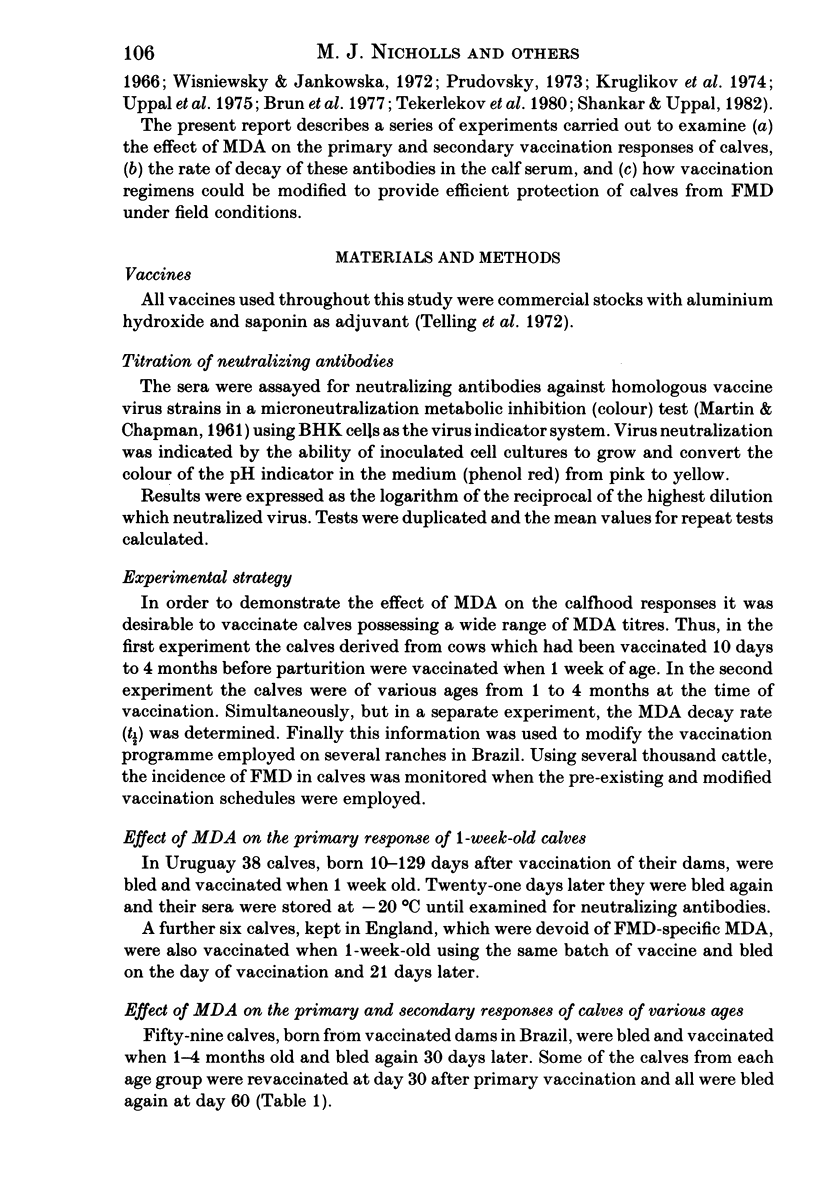



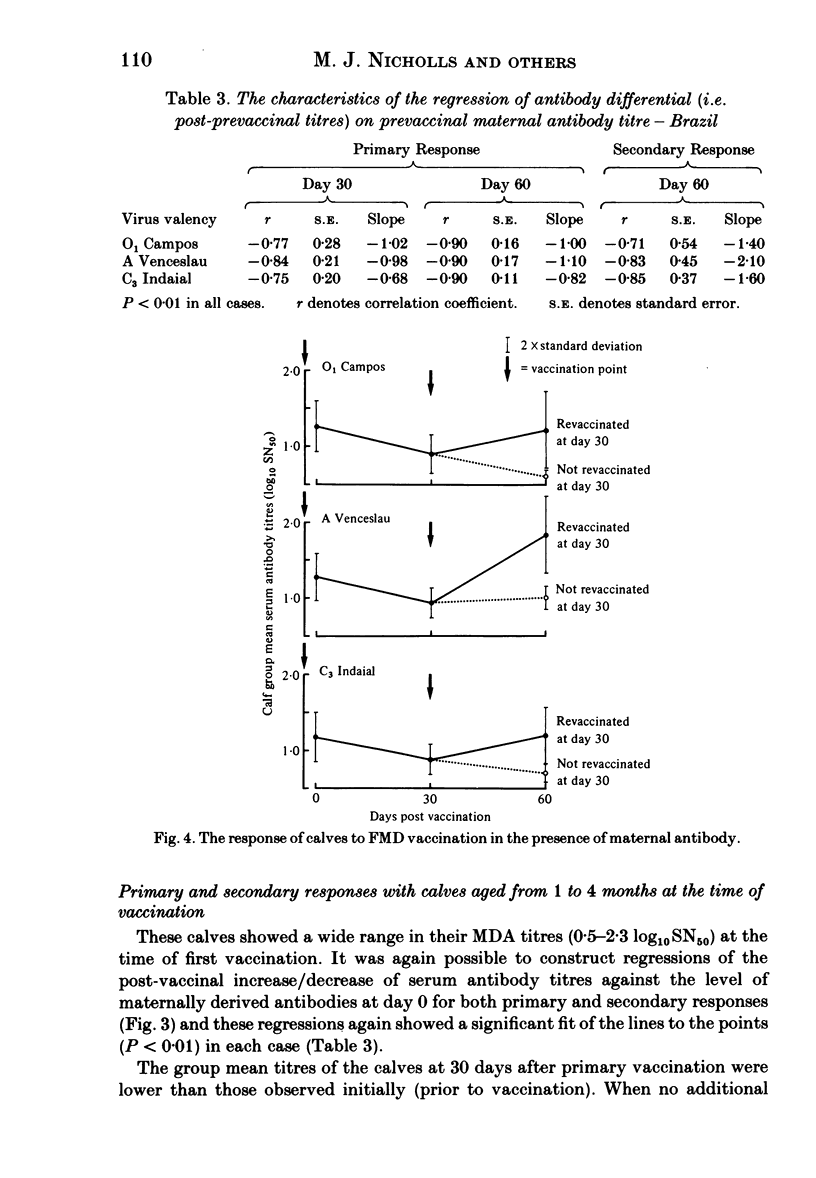
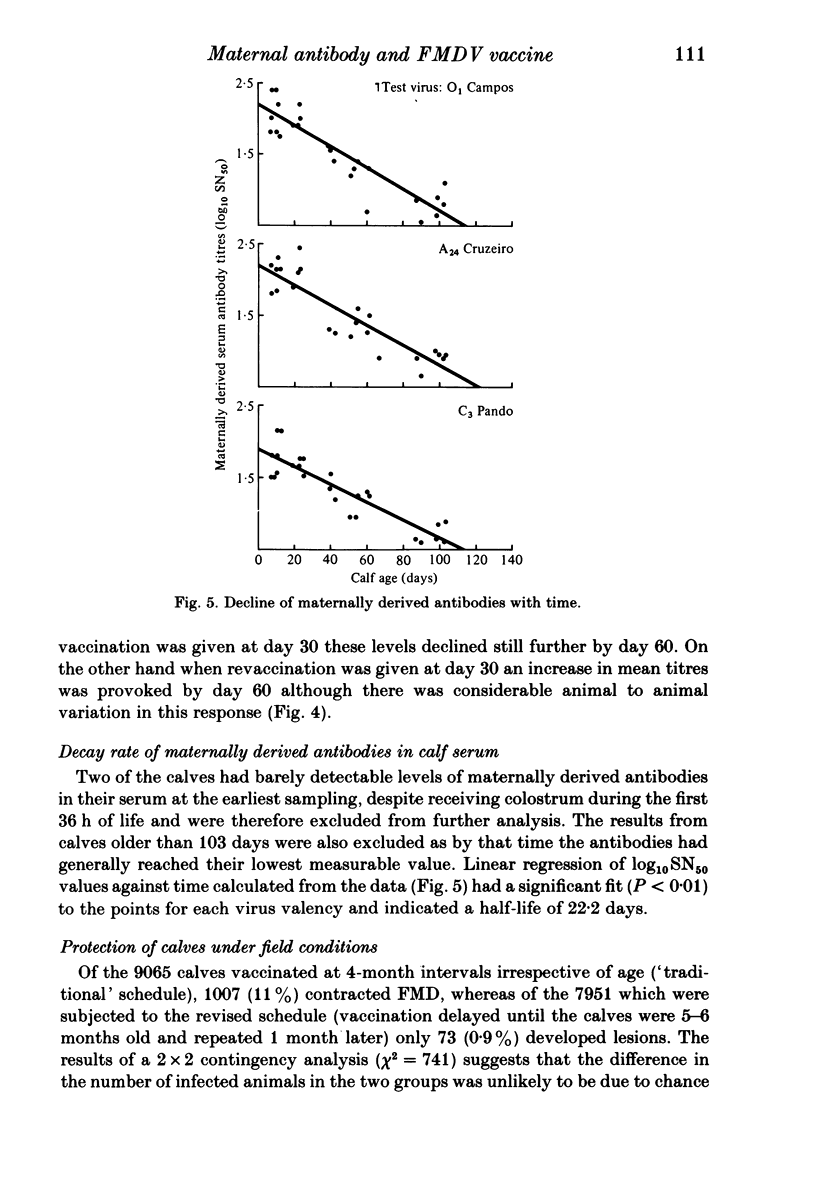
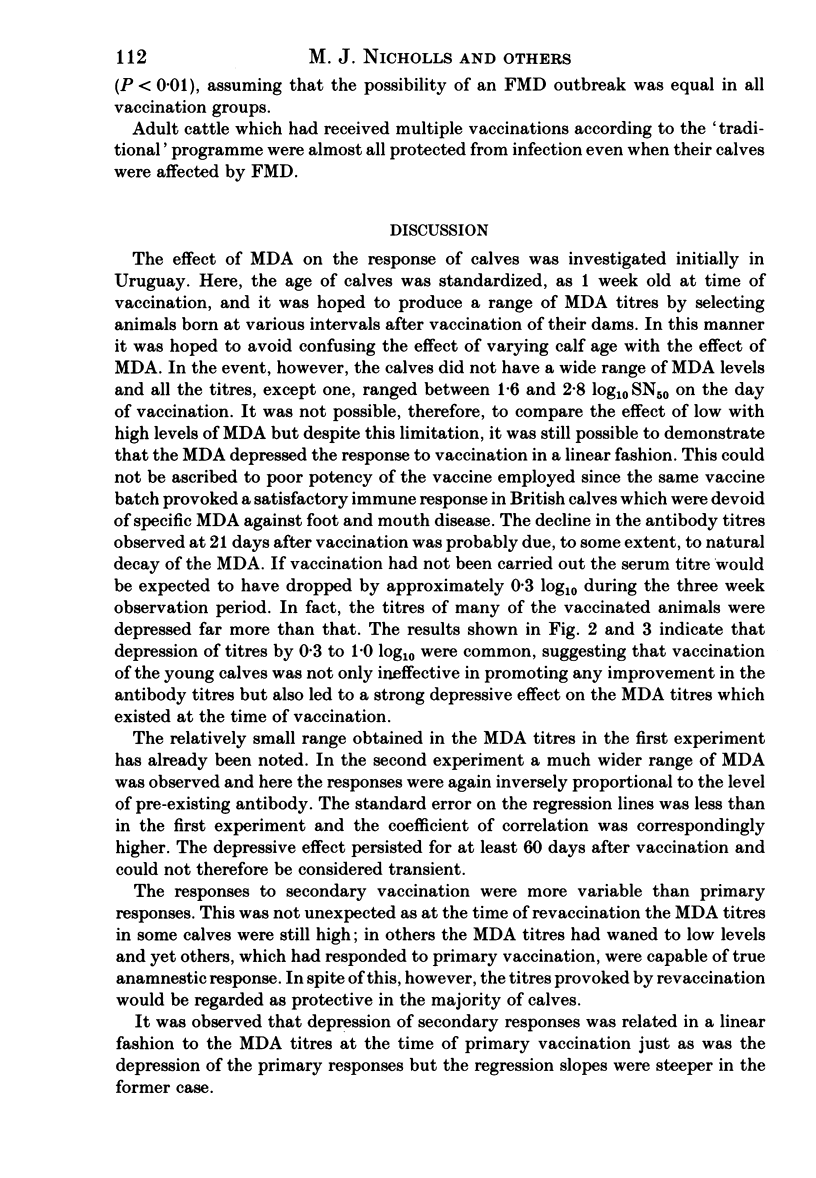

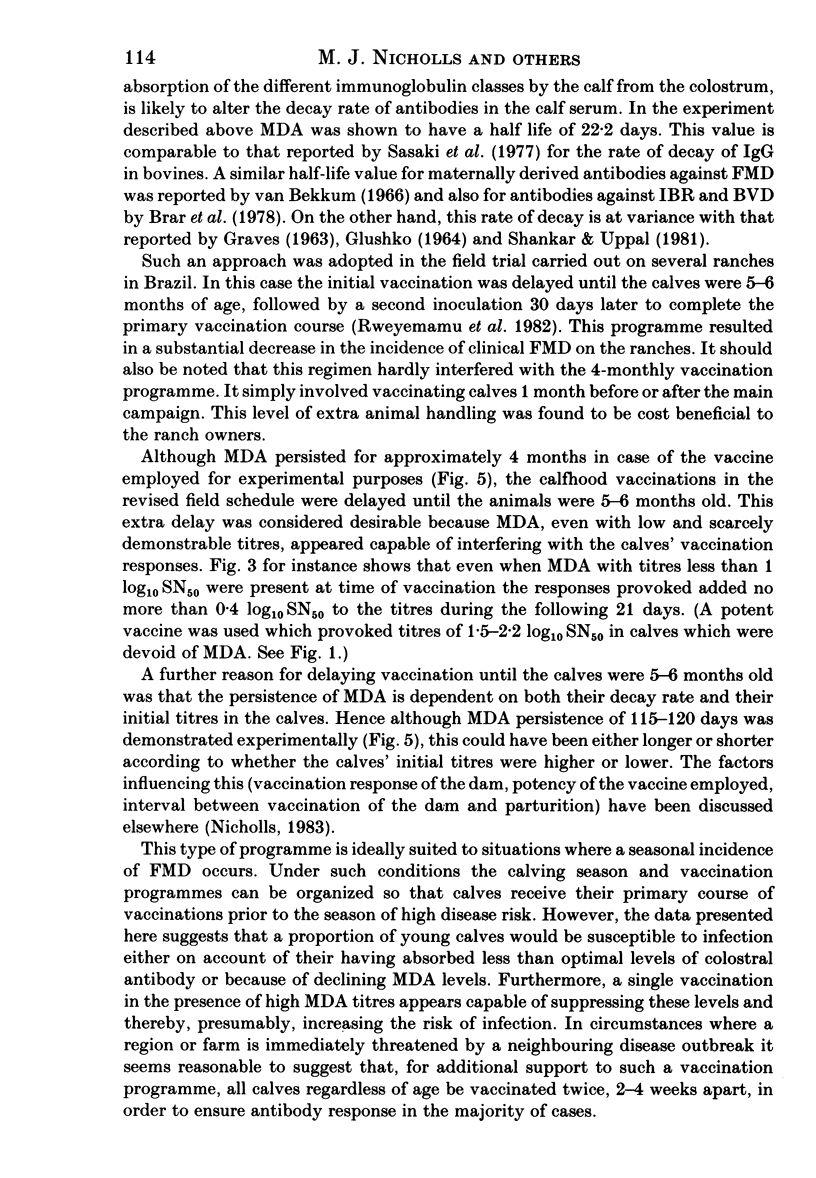
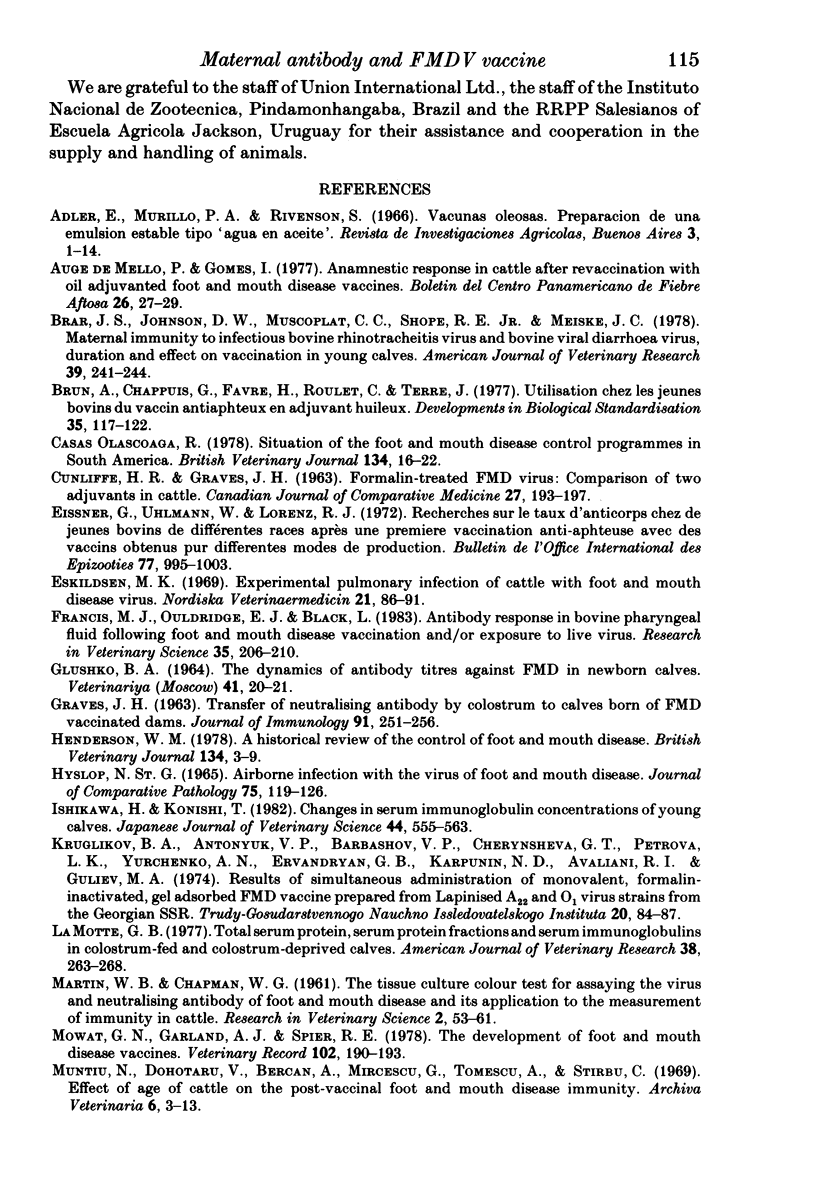

Selected References
These references are in PubMed. This may not be the complete list of references from this article.
- Brar J. S., Johnson D. W., Muscoplat C. C., Shope R. E., Jr, Meiske J. C. Maternal immunity to infectious bovine rhinotracheitis and bovine viral diarrhea viruses: duration and effect on vaccination in young calves. Am J Vet Res. 1978 Feb;39(2):241–244. [PubMed] [Google Scholar]
- Brun A., Chappuis G., Favre H., Roulet C., Terré J. Utilisation chez les jeunes bovins du vaccin antiaphteux en adjuvant huileux. Dev Biol Stand. 1976;35:117–122. [PubMed] [Google Scholar]
- Cunliffe H. R., Graves J. H. Formalin-Treated Foot-and-Mouth Disease Virus: Comparison of Two Adjuvants in Cattle. Can J Comp Med Vet Sci. 1963 Aug;27(8):193–197. [PMC free article] [PubMed] [Google Scholar]
- Eissner G., Uhlmann W., Lorenz R. J. Recherches sur le taux d'anticorps chez de jeunes bovins de différentes races après une première vaccination anti-aphteuse avec des vaccins obtenus par différents modes de production. Bull Off Int Epizoot. 1972 May-Jun;77(5):995–1003. [PubMed] [Google Scholar]
- Francis M. J., Ouldridge E. J., Black L. Antibody response in bovine pharyngeal fluid following foot-and-mouth disease vaccination and, or, exposure to live virus. Res Vet Sci. 1983 Sep;35(2):206–210. [PubMed] [Google Scholar]
- GRAVES J. H. TRANSFER OF NEUTRALIZING ANTIBODY BY COLOSTRUM TO CALVES BORN OF FOOT-AND-MOUTH DISEASE VACCINATED DAMS. J Immunol. 1963 Aug;91:251–256. [PubMed] [Google Scholar]
- HYSLOP N. S. AIRBORNE INFECTION WITH THE VIRUS OF FOOT-AND-MOUTH DISEASE. J Comp Pathol. 1965 Apr;75:119–126. doi: 10.1016/0021-9975(65)90002-2. [DOI] [PubMed] [Google Scholar]
- Ishikawa H., Konishi T. Changes in serum immunoglobulin concentrations of young calves. Nihon Juigaku Zasshi. 1982 Aug;44(4):555–563. doi: 10.1292/jvms1939.44.555. [DOI] [PubMed] [Google Scholar]
- LaMotte G. B. Total serum protein, serum protein fractions and serum immunoglobulins in colostrum-fed and colostrum-deprived calves. Am J Vet Res. 1977 Feb;38(2):263–268. [PubMed] [Google Scholar]
- Sasaki M., Davis C. L., Larson B. L. Immunoglobulin IgG1 metabolism in new born calves. J Dairy Sci. 1977 Apr;60(4):623–626. doi: 10.3168/jds.S0022-0302(77)83910-6. [DOI] [PubMed] [Google Scholar]
- Scott J. M., Pegram R. G., Holmes P. H., Pay T. W., Knight P. A., Jennings F. W., Urquhart G. M. Immunosuppression in bovine trypanosomiasis: field studies using foot-and-mouth disease vaccine and clostridial vaccine. Trop Anim Health Prod. 1977 Aug;9(3):159–165. doi: 10.1007/BF02236590. [DOI] [PubMed] [Google Scholar]
- Tekerlekov P., Uruchev K., Nikolova E., Genov I., Tsutsumanski V. Opiti za spetsifichna imunoprofilaktika na teletata sreshtu shap. Vet Med Nauki. 1980;17(2):28–35. [PubMed] [Google Scholar]


